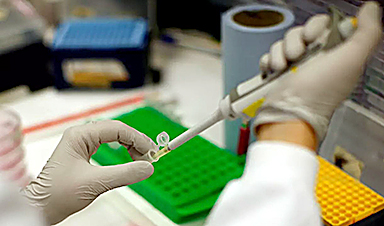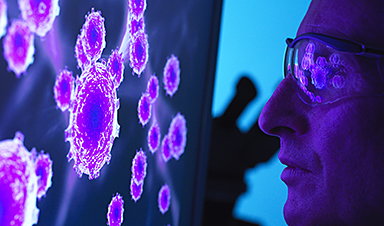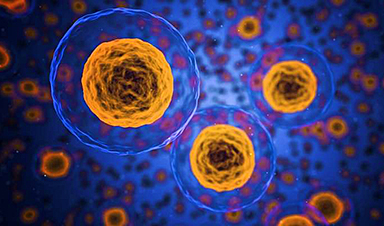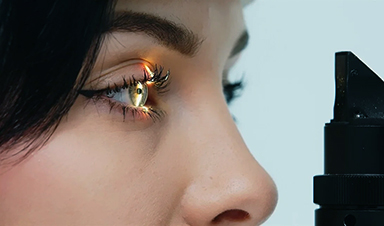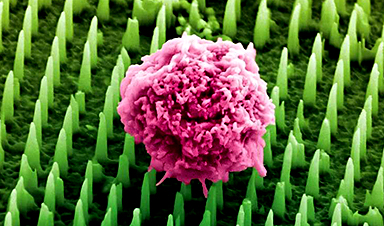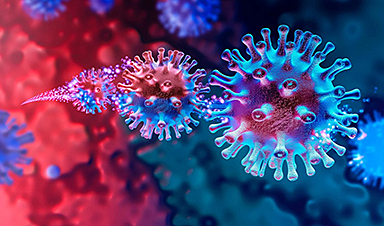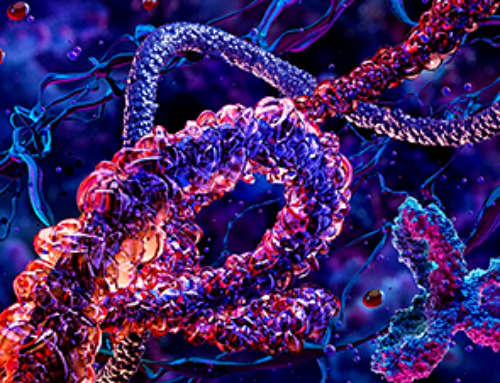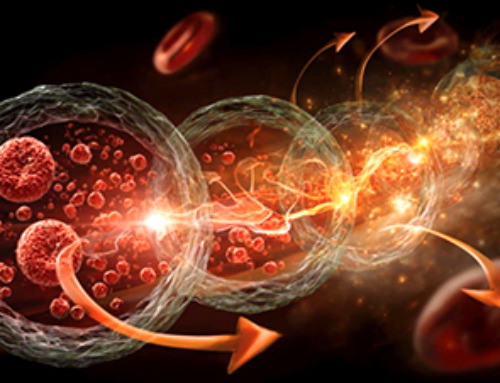- CAR-T therapy can cure terminally ill cancer patients but it is prohibitively expensive, costing hundreds of thousands of dollars.
- Leveraging recent advances in chip technology scientists can create and mass produce small machines to re-engineer the immune system.
- But the scientific community needs public-private partnerships to ensure this medical breakthrough becomes accessible to everyone.
After suffering 16 months of chemotherapy for her leukaemia, treatment options for six-year-old Emily Whitehead had run out. Her parents began to fear the worst. As a last-ditch effort, the University of Pennsylvania enrolled Emily in a clinical trial that involved reprogramming her immune cells to destroy her cancer. The results were phenomenal. Emily not only survived, but nine years later she is a healthy teenager with no cancer.
Behind Emily’s recovery is CAR-T (Chimeric Antigen Receptor T cells ) a cell-based therapy that has become a revolutionary weapon in the treatment of previously incurable blood cancers.
CAR-T cell therapy genetically modifies a patient’s immune cells to hunt and kill cancer cells. It is a form of personalized immunotherapy that can provide lasting remissions, even to terminally ill patients who have just months to live and for whom classic treatment options have not worked.
More than 400 clinical trials of CAR-T therapies are currently in progress. Their impact could be enormous. According to the World Health Organization, cancer causes one in six deaths worldwide. Personalized cell therapy has the potential to save millions of lives. Preliminary data even suggests that engineering immune cells may one day be used to treat heart failure, autoimmune diseases, diabetes and HIV.
Why does CAR-T cost so much?
But unit economics are hobbling the rollout of CAR-T to the full number of patients whose lives it could save. The treatment alone can cost up to $475,000 and US hospitals can charge as much as $1.5 million to administer it, once ancillary costs are taken into account.
So why this high price? With conventional therapies, drug makers get economies of scale: the more they produce, the cheaper each dose becomes.
But CAR-T is tailor-made for each patient, and behind every treatment lies a highly sophisticated process, which is time-consuming and brutally expensive.
The patient’s immune cells are collected, purified in various steps, genetically modified, formulated at the right dose and reinfused. This complex manufacturing process requires shipments to different labs and frequent manual interventions, which introduce the risk of human error and potentially life-threatening side effects. Compounded by the fact that CAR-T consists of living cells that vary in potency, manufacturers need to continuously test results throughout the process.
The result is a production time that can take weeks, and an unaffordable price. Unless these economics change, this treatment will not reach patients whose lives it could save – it will only reach those privileged enough to afford it.
Technology holds the key to reducing costs
There is, however, hope. The most recent insights in nanotechnology, artificial intelligence (AI), biosensors, and the Internet of Things could help overcome the current roadblocks in making personalized cell therapies affordable.
The solution to democratize these therapies lies in automating their manufacturing process, which would reduce the cost, time, and risks significantly. This will require several engineering breakthroughs but is technically possible.
Recent advances in chip technology provide inspiration. The modern world’s insatiable demand for better computers, gaming consoles, and smartphones has resulted in the extreme miniaturization of transistors – the components which drive technology’s processing capacity – as more transistors on smaller circuits enables new and stronger technological abilities…..
News
AI matches doctors in mapping lung tumors for radiation therapy
In radiation therapy, precision can save lives. Oncologists must carefully map the size and location of a tumor before delivering high-dose radiation to destroy cancer cells while sparing healthy tissue. But this process, called [...]
Scientists Finally “See” Key Protein That Controls Inflammation
Researchers used advanced microscopy to uncover important protein structures. For the first time, two important protein structures in the human body are being visualized, thanks in part to cutting-edge technology at the University of [...]
AI tool detects 9 types of dementia from a single brain scan
Mayo Clinic researchers have developed a new artificial intelligence (AI) tool that helps clinicians identify brain activity patterns linked to nine types of dementia, including Alzheimer's disease, using a single, widely available scan—a transformative [...]
Is plastic packaging putting more than just food on your plate?
New research reveals that common food packaging and utensils can shed microscopic plastics into our food, prompting urgent calls for stricter testing and updated regulations to protect public health. Beyond microplastics: The analysis intentionally [...]
Aging Spreads Through the Bloodstream
Summary: New research reveals that aging isn’t just a local cellular process—it can spread throughout the body via the bloodstream. A redox-sensitive protein called ReHMGB1, secreted by senescent cells, was found to trigger aging features [...]
AI and nanomedicine find rare biomarkers for prostrate cancer and atherosclerosis
Imagine a stadium packed with 75,000 fans, all wearing green and white jerseys—except one person in a solid green shirt. Finding that person would be tough. That's how hard it is for scientists to [...]
Are Pesticides Breeding the Next Pandemic? Experts Warn of Fungal Superbugs
Fungicides used in agriculture have been linked to an increase in resistance to antifungal drugs in both humans and animals. Fungal infections are on the rise, and two UC Davis infectious disease experts, Dr. George Thompson [...]
Scientists Crack the 500-Million-Year-Old Code That Controls Your Immune System
A collaborative team from Penn Medicine and Penn Engineering has uncovered the mathematical principles behind a 500-million-year-old protein network that determines whether foreign materials are recognized as friend or foe. How does your body [...]
Team discovers how tiny parts of cells stay organized, new insights for blocking cancer growth
A team of international researchers led by scientists at City of Hope provides the most thorough account yet of an elusive target for cancer treatment. Published in Science Advances, the study suggests a complex signaling [...]
Nanomaterials in Ophthalmology: A Review
Eye diseases are becoming more common. In 2020, over 250 million people had mild vision problems, and 295 million experienced moderate to severe ocular conditions. In response, researchers are turning to nanotechnology and nanomaterials—tools that are transforming [...]
Natural Plant Extract Removes up to 90% of Microplastics From Water
Researchers found that natural polymers derived from okra and fenugreek are highly effective at removing microplastics from water. The same sticky substances that make okra slimy and give fenugreek its gel-like texture could help [...]
Instant coffee may damage your eyes, genetic study finds
A new genetic study shows that just one extra cup of instant coffee a day could significantly increase your risk of developing dry AMD, shedding fresh light on how our daily beverage choices may [...]
Nanoneedle patch offers painless alternative to traditional cancer biopsies
A patch containing tens of millions of microscopic nanoneedles could soon replace traditional biopsies, scientists have found. The patch offers a painless and less invasive alternative for millions of patients worldwide who undergo biopsies [...]
Small antibodies provide broad protection against SARS coronaviruses
Scientists have discovered a unique class of small antibodies that are strongly protective against a wide range of SARS coronaviruses, including SARS-CoV-1 and numerous early and recent SARS-CoV-2 variants. The unique antibodies target an [...]
Controlling This One Molecule Could Halt Alzheimer’s in Its Tracks
New research identifies the immune molecule STING as a driver of brain damage in Alzheimer’s. A new approach to Alzheimer’s disease has led to an exciting discovery that could help stop the devastating cognitive decline [...]
Cyborg tadpoles are helping us learn how brain development starts
How does our brain, which is capable of generating complex thoughts, actions and even self-reflection, grow out of essentially nothing? An experiment in tadpoles, in which an electronic implant was incorporated into a precursor [...]
